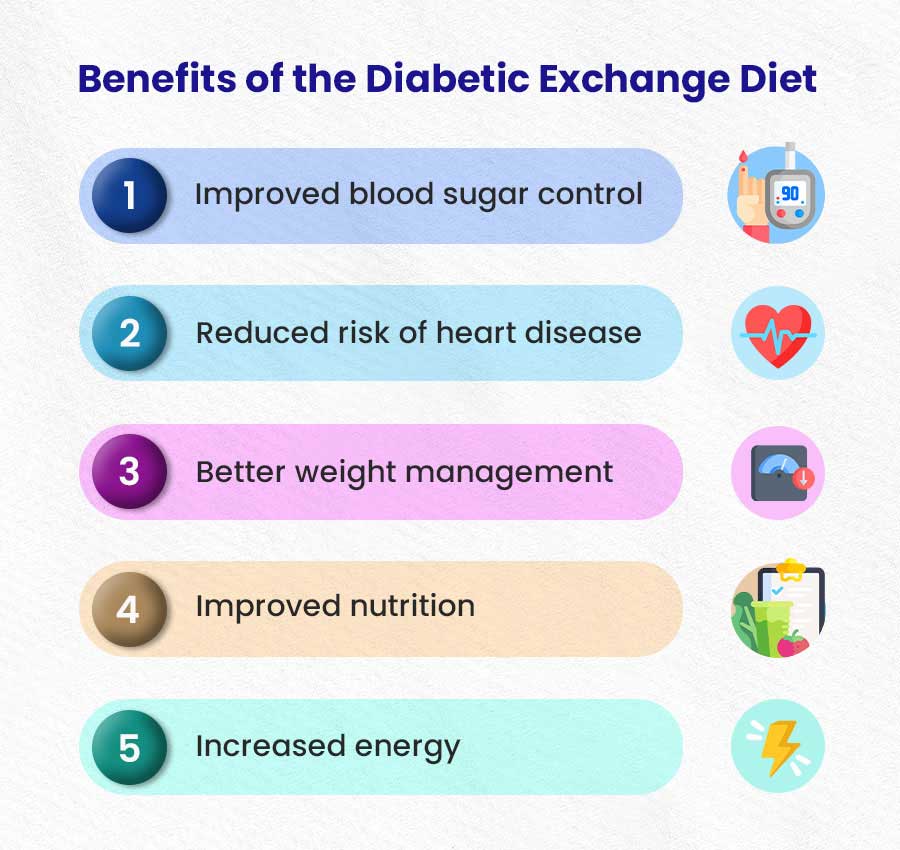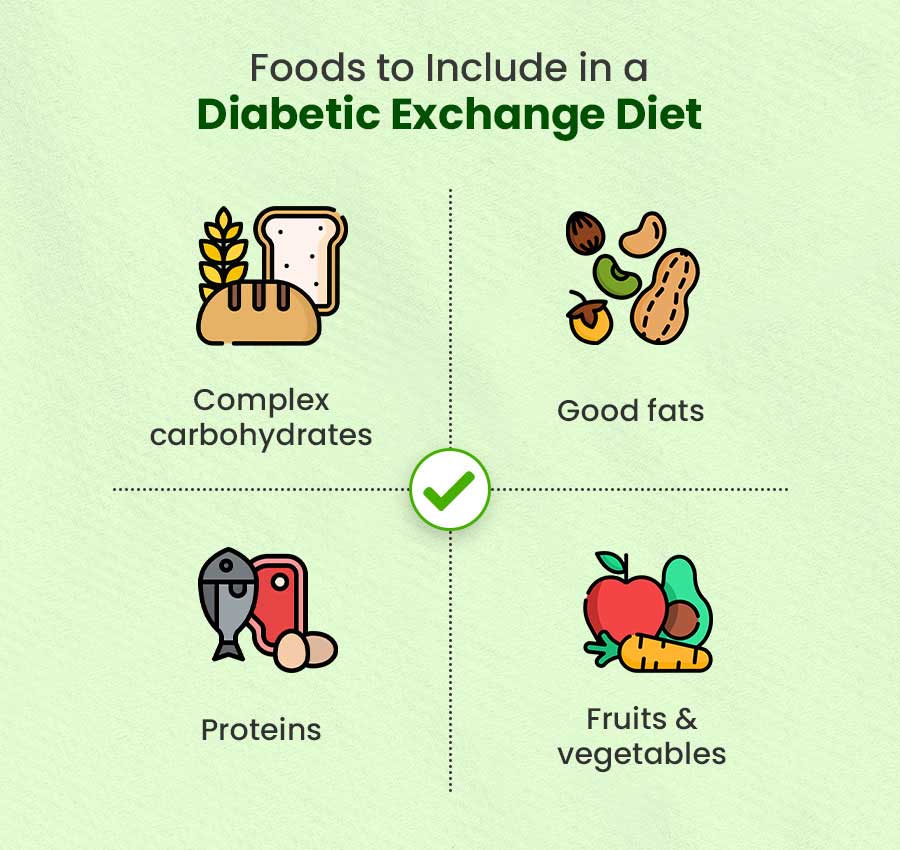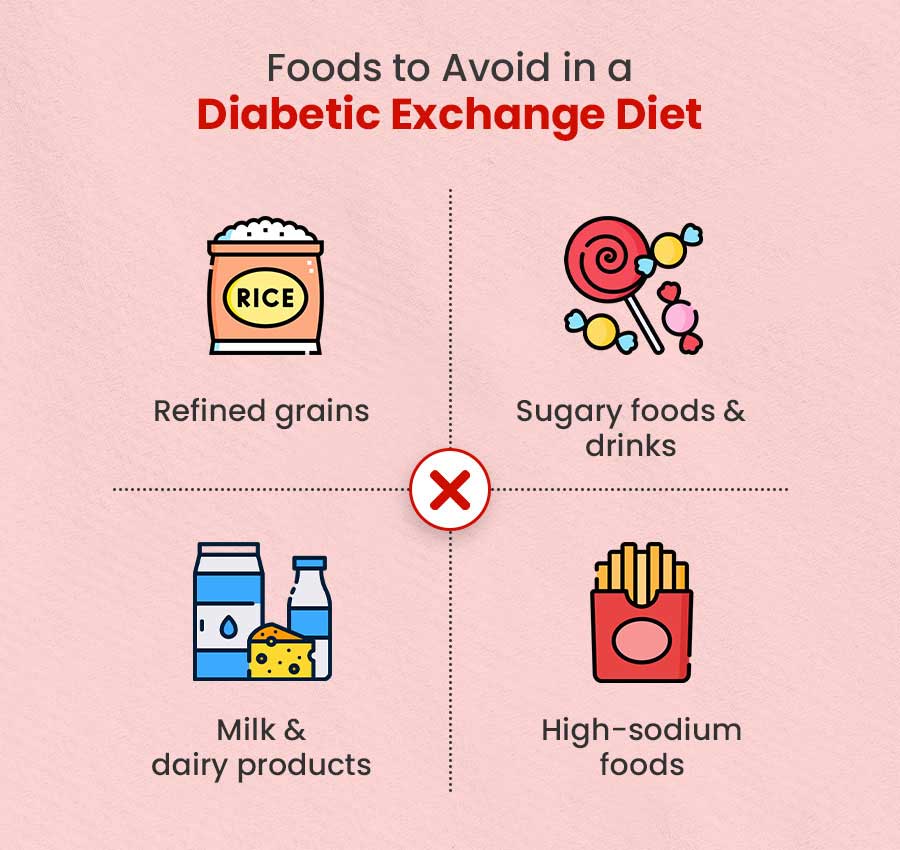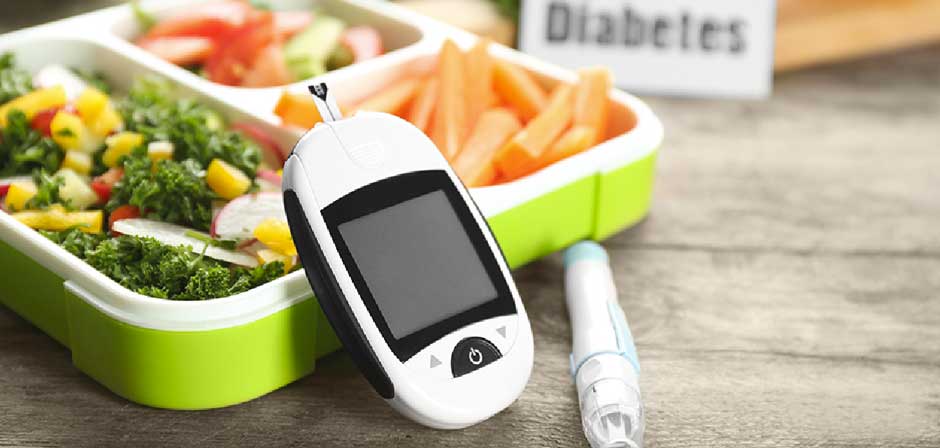Diabetes is a chronic condition that affects glucose metabolism- the way the body processes glucose. When left unaddressed, it can lead to heart disease, kidney damage, nerve damage, and blindness in the long run. According to the Centers for Disease Control and Prevention*, 37.3 million people, which equates to 11.3% of the US population, are currently suffering from diabetes.
However, medications and a balanced and healthy diet can help manage this chronic disease. Primary care physicians often recommend diabetic exchange diets to help manage diabetes and its associated complications. What is the diabetes exchange diet, how can it benefit those suffering from diabetes, and how to incorporate it into your regular diet? Read on to learn more.
What is a Diabetic Exchange Diet?
It is a meal planning system, that enables people with diabetes to manage their blood sugar levels efficiently. Three macronutrients- carbohydrates, protein, and fat, have different effects on the human body, and thus, it is crucial to balance their intake to control blood sugar levels. While preparing a diabetic exchange diet, dietitians generally categorize foods into six groups based on their macronutrient content. After that, each group is assigned a specific number of portions, which can be later used in planning meals and snacks for those suffering from diabetes.
These six categories of foods in diabetic exchange diet are:
- Starchy foods
- Fruits
- Vegetables
- Meat and meat substitutes
- Fatty foods
- Milk and dairy
Benefits of Diabetic Exchange Diet for Seniors

- Improved blood sugar control
A diabetic exchange diet plan can help regulate blood sugar levels by balancing the intake of carbohydrates, protein, and fat.
- Reduced risk of heart disease
This is a diet plan that emphasizes the intake of whole, nutrient-dense foods, which are low in saturated and trans fats to significantly reduce the risk of heart disease.
- Better weight management
Maintaining a healthy weight is crucial for diabetes management, as excess weight can lead to insulin resistance in the body and increased blood sugar levels. The diabetic exchange diet provides a structured approach to meal planning to help manage calorie intake effectively and achieve a healthy weight.
- Improved nutrition
Those suffering from diabetes may be at risk of nutrition deficiencies due to food restrictions, which can ultimately lead to poor eating habits. The diabetic exchange diet encourages seniors to follow a balanced diet with a variety of nutrient-dense foods, including whole grains, fruits, vegetables, lean proteins, and low-fat dairy products.
- Increased energy
If someone is diabetic, they may experience fatigue or low energy levels as high blood sugar levels impair the body’s ability to use glucose for energy production. This exchange diet provides a balanced meal rich in complex carbohydrates, protein, and good fat, which can help them avoid energy dips and feel more energized throughout the day.
How to Plan Meals with the Diabetic Exchange Diet
- Determine the recommended daily calorie intake
The amount of calories individuals should consume each day varies for each person based on factors like age, gender, weight, height, and how active they are.
To determine the appropriate daily calorie intake for an individual, consult a healthcare provider or registered dietitian. Contact EliteCare Health Center, one of the best medical clinics in Florida that offers a wide range of senior care services such as venipuncture, blood sugar test, mammograms, etc. Contact your nearest healthcare center or visit their website to schedule an appointment with a board-certified primary care physician.
- Measure portions
Individuals can use a food scale or measuring cups to measure the portion size and ensure that they are consuming the right amount of carbohydrates, protein, and fats.
To ensure the appropriate portion, individuals can also consider the plate method, a visual guide to plan meals according to the diabetic exchange diet. This method involves dividing a 9-inch plate into three sections: half for non-starchy vegetables, a quarter for protein, and a quarter for starches. Contact a senior care service and consult a certified dietitian to provide the right amount of food to seniors.
- Plan ahead
Planning meals and snacks in advance can help to stay on track with dietary goals and avoid impulsive food choices. Individuals can plan their meals and snacks for the week, make a grocery list, and prepare meals and snacks in advance to ensure they have healthy options readily available.
It is crucial to eat homemade foods rather than eating out or having processed foods to regulate blood sugar levels.
- Consider meal timings
When we eat, our body releases insulin to help transport glucose from the bloodstream into the cells for energy. Therefore, eating meals and snacks at regular intervals can help our body release insulin at regular intervals and keep blood sugar levels stable. Primary care physicians generally recommend the following meal timing for better diabetes management.
- Eat a filling breakfast within an hour of waking up.
- Try to have small meals every 4 to 5 hours after that.
- Choose healthy snacks between meals if you get hungry.
- Do not eat late at night.
Foods to Include in a Diabetic Exchange Diet

- Complex carbohydrates
This is an important part of a diabetic exchange diet because complex carbohydrates break down more slowly than simple carbohydrates, preventing spikes in blood sugar levels.
Some of the complex carbohydrates suitable for a diabetic exchange diet are whole grains such as brown rice, quinoa, and whole wheat bread.
- Good fats
Foods containing monounsaturated and polyunsaturated fats are considered some of the best foods for diabetics for their properties to improve cholesterol levels and reduce the risk of heart disease. In addition, it is crucial to limit the intake of saturated and trans fats, which can further increase the risk of several other health issues like heart disease.
Foods high in good fats include nuts, seeds, avocados, olive oil, and fatty fish such as salmon, tuna, etc. are good options.
- Proteins
High-protein foods are useful in slowing down the absorption rate of carbohydrates and improving blood sugar control.
Diabetic people can choose from healthy protein sources such as lean meats such as chicken and turkey, fish, eggs, tofu, and legumes such as beans and lentils.
- Fruits and vegetables
Those suffering from diabetes should increase their fresh fruits and veggies intake, which are high in fiber, vitamins, and minerals. However, it is crucial to avoid whole fruits like bananas, mangoes, grapes, etc., high in simple carbohydrates and natural sugar. These fruits can lead to a spike in blood sugar levels.
Instead, individuals suffering from diabetes can opt for apples, pears, citrus fruits and non-starchy vegetables leafy greens, broccoli, cauliflower, carrots, peppers, etc. which are considered some of the best foods for diabetes.
Foods to Avoid in a Diabetic Exchange Diet

- Refined grains
Processed grains generally have the bran and germ removed, which lacks fiber and important nutrients. Avoid foods made with refined grains including white bread, white rice, etc. which can cause a rapid increase in blood sugar levels.
- Sugary foods and drinks
Individuals suffering from diabetes should strictly avoid the consumption of processed foods and store-bought beverages that are high in added sugars. Avoid candy, soda, sports drinks, baked goods, etc. which contain added sugar and preservatives.
- Milk and dairy
Most of the dairy products available in the market are high in trans-fat and lactose, which is a natural sugar. Choose low-fat dairy products such as skim milk, and low-fat yogurt or lactose-free, plant-based alternatives such as almond milk, soy milk, etc.
- High-sodium foods
Diabetics should limit their sodium intake, as it can significantly increase the risk of high blood pressure and other health problems. Examples of some of the most consumed high-sodium foods include canned soups and vegetables, processed meats, and salty snacks.
Conclusion
A diabetic exchange diet should be tailored to each individual’s specific needs and goals. Therefore, consulting a registered dietitian is crucial for proper measurement of each food group and creating a personalized diabetic exchange list that takes into account an individual’s preferences, lifestyle, and health status.
*Data retrieved from the Centers for Disease Control and Prevention
Reference
https://www.aplaceformom.com/caregiver-resources/articles/diabetic-diet-plan
https://www.tasteofhome.com/article/diabetic-exchanges/
https://www.verywellhealth.com/exchange-method-managing-diabetes-3289496

